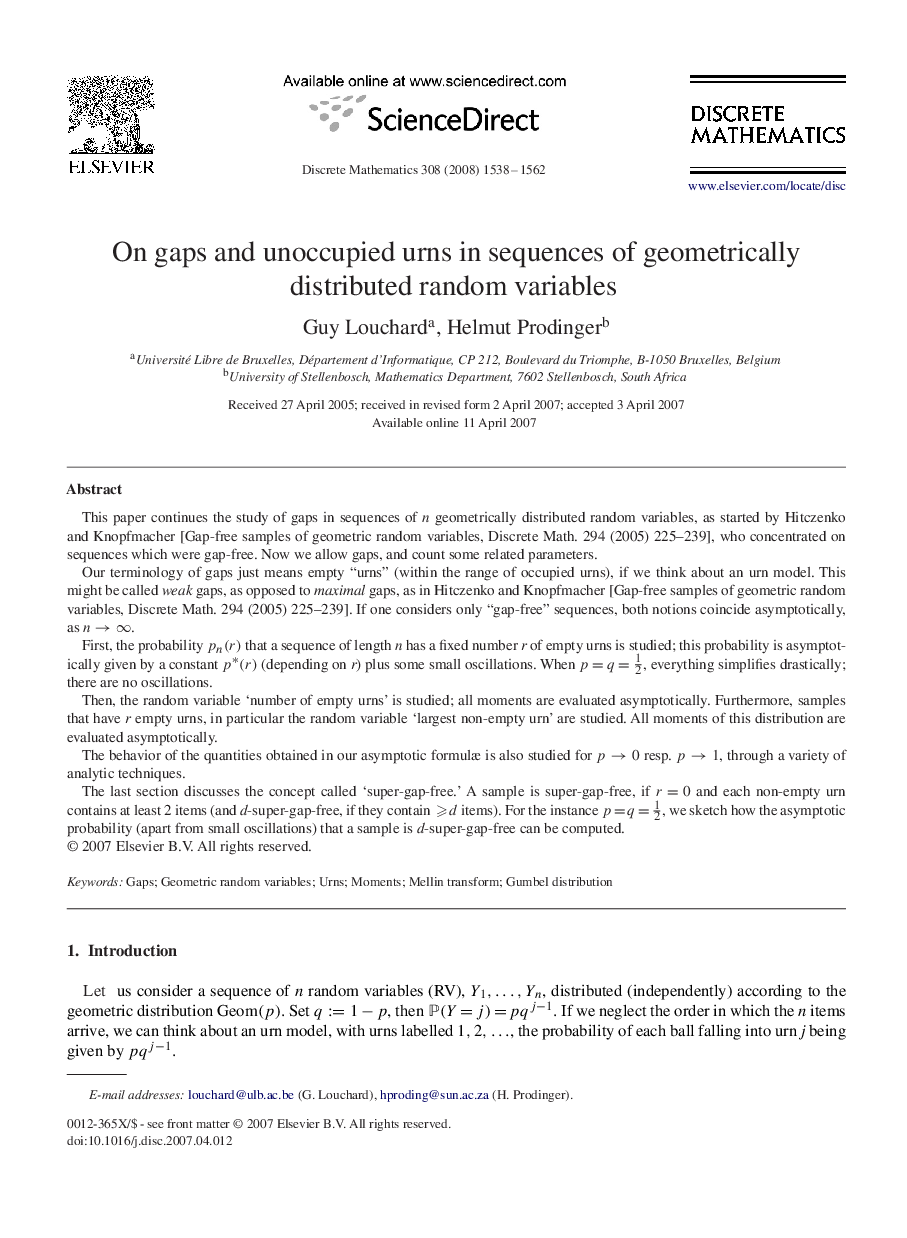| Article ID | Journal | Published Year | Pages | File Type |
|---|---|---|---|---|
| 4649911 | Discrete Mathematics | 2008 | 25 Pages |
This paper continues the study of gaps in sequences of n geometrically distributed random variables, as started by Hitczenko and Knopfmacher [Gap-free samples of geometric random variables, Discrete Math. 294 (2005) 225–239], who concentrated on sequences which were gap-free. Now we allow gaps, and count some related parameters.Our terminology of gaps just means empty “urns” (within the range of occupied urns), if we think about an urn model. This might be called weak gaps, as opposed to maximal gaps, as in Hitczenko and Knopfmacher [Gap-free samples of geometric random variables, Discrete Math. 294 (2005) 225–239]. If one considers only “gap-free” sequences, both notions coincide asymptotically, as n→∞n→∞.First, the probability pn(r)pn(r) that a sequence of length n has a fixed number r of empty urns is studied; this probability is asymptotically given by a constant p*(r)p*(r) (depending on r ) plus some small oscillations. When p=q=12, everything simplifies drastically; there are no oscillations.Then, the random variable ‘number of empty urns’ is studied; all moments are evaluated asymptotically. Furthermore, samples that have r empty urns, in particular the random variable ‘largest non-empty urn’ are studied. All moments of this distribution are evaluated asymptotically.The behavior of the quantities obtained in our asymptotic formulæ is also studied for p→0p→0 resp. p→1p→1, through a variety of analytic techniques.The last section discusses the concept called ‘super-gap-free.’ A sample is super-gap-free, if r=0r=0 and each non-empty urn contains at least 2 items (and d -super-gap-free, if they contain ⩾d⩾d items). For the instance p=q=12, we sketch how the asymptotic probability (apart from small oscillations) that a sample is d-super-gap-free can be computed.
